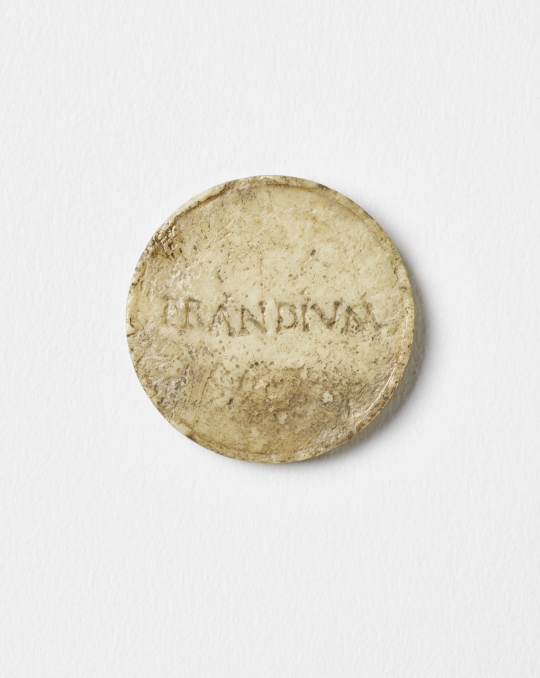In 1830 August Kestner notes in his diary (18.01.1830): "Visit to Baldeschi and Frediani. Bought the interesting tesserae with PRANDIVM from him for 5 scudi 60 bajocchi." Thus this is one of the few objects in Kestner's collection of which we know when, where and at what price it was acquired.
The interpretation of the tessera is not entirely clear. It is suspected that it could be an entrance ticket or 'voucher' for a breakfast (= prandium). (AVS)
Former August Kestner Collection, Rome
en









